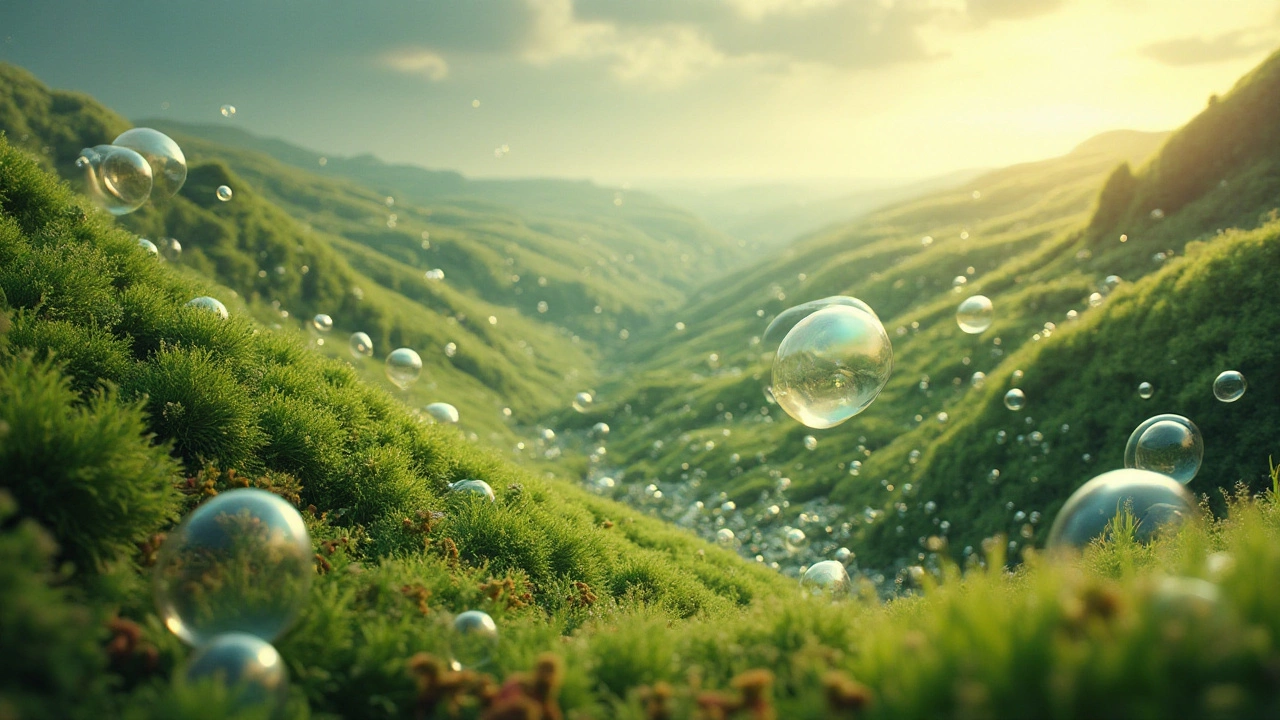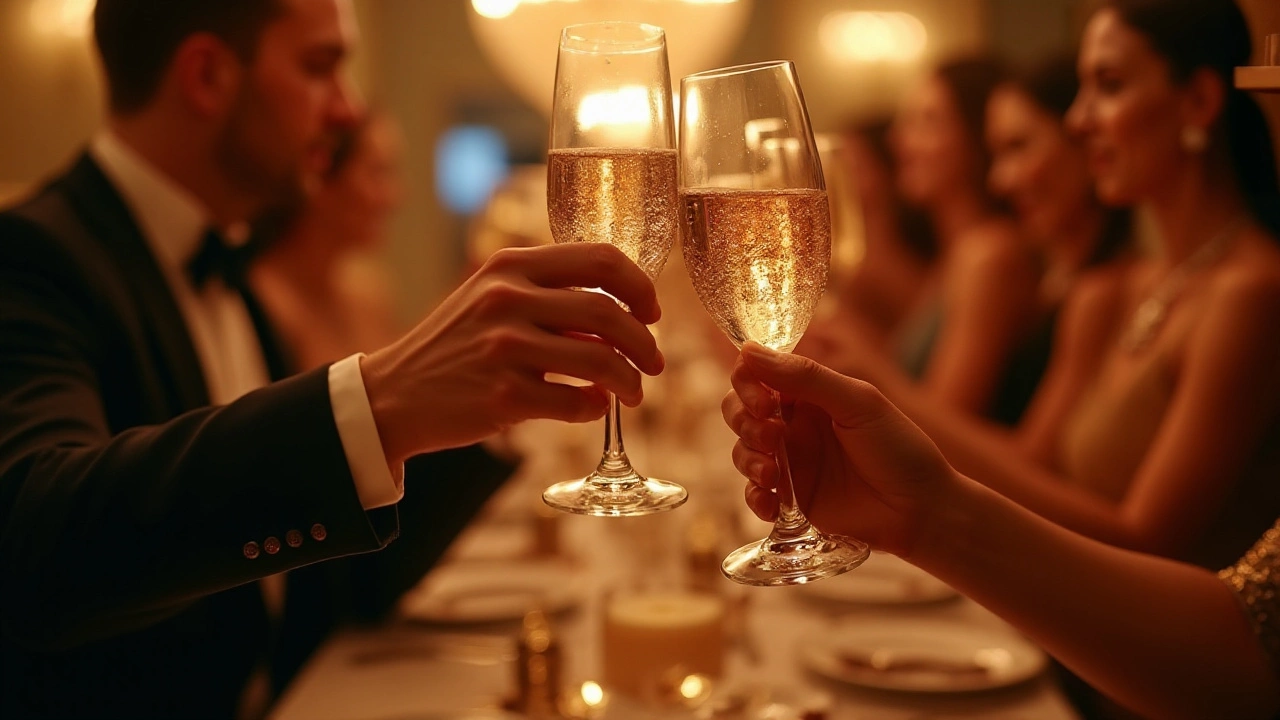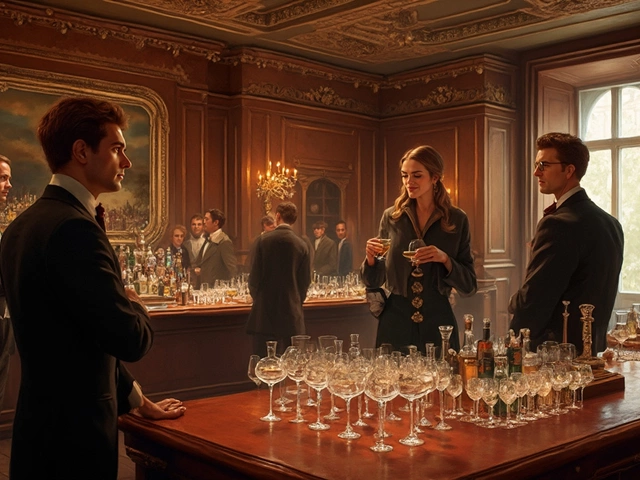You've likely seen it popped at celebrations, its effervescent bubbles dancing in delicate flutes. Champagne is synonymous with luxury and festivity, but have you ever wondered about its ability to intoxicate? While sipping on this sparkling wine might feel like joy embodied in a glass, we have to ask: is Champagne truly capable of getting you drunk?
Understanding the answer involves a look into the science of Champagne, its alcohol content, and how it interacts with the body. Not all beverages are created equal, and there's more to the bubbly experience than meets the eye. Join us as we unravel the secrets that make Champagne a singular drink for both joyous and intoxicating reasons.
- The Science of Bubbles
- Alcohol Content in Champagne
- How Fast Does Champagne Affect You?
- Tasting Tips for Enjoying Champagne
The Science of Bubbles
When you pour a glass of champagne, you're witnessing a dance that began over a century ago. At the heart of this dance are the bubbles, which are produced through a process called secondary fermentation. This process happens inside the bottle, where yeast converts sugar into alcohol and carbon dioxide. The carbon dioxide, with nowhere to escape, dissolves into the wine, only to be released as bubbles once the cork is popped. These bubbles are not just for show; they play a critical role in the champagne experience by carrying aromas and flavors to your nose and palate. It's like tiny messengers delivering the essence of the drink directly to your senses.
The size and persistence of bubbles can actually tell you a lot about the quality of the champagne. Smaller, more persistent bubbles are often a hallmark of a well-crafted drink. But why do these bubbles vary in size? It largely depends on the wine's age and the amount of dissolved carbon dioxide. Younger wines tend to have finer bubbles, enhancing the tactile sensation on the palate. Older bottles might show larger bubbles due to less dissolved CO2, indicating how time has mellowed the drink. The temperature at which you serve champagne can also impact the bubble formation, highlighting the delicate balance needed to optimize the experience.
"Champagne is the wine of civilization and the oil of government." — Winston Churchill
Today's scientists even use high-speed cameras to study champagne's effervescence. These tiny spheres rise in elegant streams, and as they reach the surface and burst, they release aromatic compounds into the air. This is not just spectacle but a key part of aroma and taste delivery, with each bubble bursting delivering a unique profile. If you were to look at champagne under a microscope, you'd see bubbles clinging to imperfections in the glass, waiting for just the right moment to launch upward. These phenomena turn the simple act of sipping into a multi-sensory experience.
But what does all this mean for the drinker? Interestingly, the alcohol delivered via bubbles can lead to the quicker onset of intoxication. Because of the effervescence, absorption of alcohol into the bloodstream can be faster compared to still wines. Studies have shown that carbonation encourages the opening of blood vessels, enabling more rapid alcohol delivery, thus setting the stage for festivities to begin with a little more cheer. Understanding these dynamics allows enthusiasts to appreciate each sip with a sense of discovery, knowing that both nature and artistry are at work.
How to Enjoy the Bubble Chemistry
For those looking to enhance their tasting experience, awareness of these factors can be a game-changer. You might want to serve champagne at about 45°F to ensure fine bubbles, which can be achieved by chilling the bottle in ice for about 30 minutes. Upon pouring, tilt the glass to preserve more carbonation and control the foaming. Although elegant glassware can vary greatly, a tulip-shaped glass is often recommended as it allows bubbles to develop fully while concentrating the aromas. Through these simple steps, your appreciation for champagne can become almost as effervescent as the drink itself.

Alcohol Content in Champagne
When it comes to sipping champagne, many people are often curious about its potency. Typical champagne contains an alcohol by volume (ABV) measurement between 12% and 13%, placing it in a similar range to most wines, yet with its own unique properties due to the presence of carbonation. Those bubbles do more than just tickle your tongue; they play a significant role in how quickly alcohol can enter your bloodstream. The standard glass of champagne may feel lighter than other drinks, yet it carries a strong kick because the effervescence can cause the alcohol to be absorbed faster, giving a potential for that immediate buzz.
Understanding the chemical mechanics behind champagne’s potency is fascinating. The bubbles, scientifically known as carbon dioxide (CO2), reduce the density of the liquid, allowing it to spread more efficiently through the stomach lining. This means that the alcohol doesn’t just sit in your stomach waiting to be digested; it begins to work its magic almost immediately once imbibed. A study led by Dr. Françoise Barbou-Clav through the University of Reims Champagne-Ardenne found that the enhanced rate of absorption brought on by carbonation can increase blood alcohol concentrations more quickly than flat beverages. This is a pivotal reason why champagne is both celebrated for its joyous vibe and approached with a slight degree of caution.
"Champagne brings its own sensations, being light and uplifting yet possessing the undeniable ability to enliven in moments," notes renown sommelier Peter Liem, who has spent years exploring the nuanced world of sparkling wines.
To put the alcohol content into perspective, here’s a quick comparison. While a typical beer might boast an ABV around 4% to 6%, and spirits like vodka or whiskey have a much higher ABV reaching between 40% and 50%, the strength of champagne aligns closely with traditional still wines. This makes it an appealing choice for those who enjoy wine's complexities but prefer a drink that can be both refreshing and impactful. As always, paying attention to serving size is crucial; champagne glasses often hold less than other wine glasses, yet the effect can be misleading due to its quick impact on the senses.
It’s this delightful contrast of being perceived as a ‘light’ drink, alongside its substantial ABV content, that makes champagne such an alluring yet potent beverage. Whether you’re toasting at a wedding, celebrating New Year’s Eve, or simply indulging in a mid-week luxury, it’s wise to acknowledge the strength housed within this fizzy delight. Tracking your consumption not only ensures that the moment remains enjoyable but also sustains the memories that are made with each sparkling sip.

How Fast Does Champagne Affect You?
Champagne has earned a bit of a reputation for taking celebrants by surprise with its swift intoxicating effects. Unlike its still wine counterparts, Champagne contains carbon dioxide from fermentation, which not only gives it those delightful bubbles but also plays a role in how quickly it can leave you a bit tipsy. Upon consuming bubbly, the combination of alcohol and carbonation tends to accelerate the absorption of alcohol into the bloodstream. This means that, yes, the alcohol content in a glass of Champagne tends to reach your system more quickly. Scientists have suggested that this could be due to the carbonation, which might facilitate faster alcohol absorption in the stomach lining.
Different factors can affect how swiftly Champagne's effects are felt. Body weight, food consumption, and individual metabolism will all influence the outcome. A small half-glass might lead to on-the-spot giggles for one person, while someone else could handle a couple without immediate notice. What remains consistent, however, is how this sparkling drink often demands responsible enjoyment due to its sneaky effects. Many people unknowingly down more than they intend during festive occasions, partly due to how its crisp taste masks the booze factor.
The well-known sommelier, Benjamin Wallace, once remarked, "One should respect Champagne, not just for its finesse but for its ability to pleasantly surprise you with its effect."
Understanding the variations in Champagne may add more clarity to this matter. Brut, extra brut, and doux styles all contain distinctive sugar levels, which can influence how one experiences intoxication. Higher sugar content can slow absorption, while less sugar doesn't offer this buffer. This subtlety impacts the way Champagne affects various drinkers' experiences on any given occasion. Exploring this fascinating effervescence responsibly is key to enjoying its effects without unintended surprises. So next time you're toasting with this timeless classic, remember to savor slower. And perhaps try snacking in between sips—balanced indulgence can make all the difference!

Tasting Tips for Enjoying Champagne
Sipping Champagne is an experience that engages all your senses if approached with the right techniques. First and foremost, it's crucial to serve the Champagne at the optimal temperature. A bottle served too warm or too cold disrupts the delicate flavor profile that makes Champagne so special. Ideally, you'll want to chill your sparkling Champagne to somewhere between 8-10°C (46-50°F). This way, you allow the balanced acidity and fruitiness to shine through each sip. It's also about glassware; while a traditional flute is visually appealing, many experts now advocate for a wider glass. This allows the aromas to concentrate better, emanating fully as you delve into each sip.
When it’s time to pour, remember to do so gently, preserving the integrity of those infamous bubbles. Start by tilting the glass at a 45-degree angle, pouring slowly, which not only helps to control the fizz but also minimizes the vigorous disturbance of bubbles. Make sure not to fill the glass more than a third of the way; this gives the champagne room to breathe and delivers a more aromatic experience. As you bring the glass up, notice the color and clarity, which can range from the pale yellow of a brut to the golden hues of a vintage. Take a moment to swirl it, albeit softly, to release all its aromatic notes into the air.
It's quite essential to appreciate the bouquet before even tasting. Take in the aromas by gently swirling your glass, inhaling with curiosity. Does it carry notes of fresh citrus, ripe apple, or perhaps hints of brioche? Each bottle has its story reflected in its aroma. When you finally do take a sip, let it linger on your palate. Is it crisp? Is there a creamy texture lingering due to longer aging? Paying attention to these details enriches the entire tasting process. A quote from renowned sommelier, Richard Juhlin, encapsulates this journey beautifully:
"Champagne is one of the elegant extras in life."By allowing yourself this moment of reflection, you elevate your tasting to a new echelon of enjoyment.
For a structured degustation, considering various expressions of Champagne can be enlightening. Try starting with a non-vintage to understand the house style, followed by a blanc de blancs or a blanc de noirs to highlight the grape-specific characteristics. Perhaps end with a rosé, which often incorporates a richer fruit profile. Whether you're a novice or seasoned enthusiast, keeping a tasting notebook to jot down thoughts can be rewarding. Pay attention to how your preferences evolve over time as you sample different styles. Remember, tasting is a deeply personal experience, and each tasting of Champagne will differ, influenced by myriad factors like food pairings and even your mood on the day.


